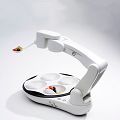
Assistive eating devices allow people with a variety of conditions impacting the use of their hands and upper body to feed themselves independently.
Rehabmart is pleased to carry innovative assistive eating devices from noted vendors that include North Coast, Sammons Preston, ADL Essentials, Maddak and Danmar.
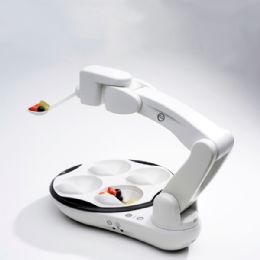
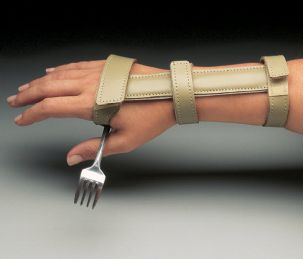
.jpg&newheight=260&quality=80)
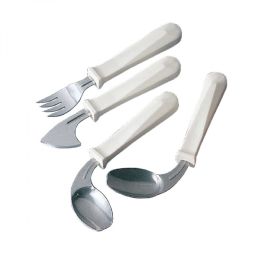
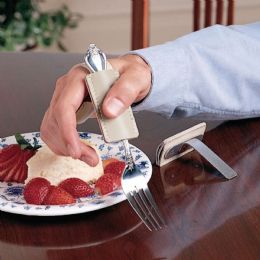
What are assistive eating devices?
Assistive eating devices fall into two groups. The first group encompasses dishes and tableware modified to allow the user to eat with a minimum of help. Some of the modifications are built-up or counterweighted handles on knives, forks and spoons for ease in gripping and controlling tremors, specialized coatings to protect lips and teeth, weighted or suction bases on bowls and dishes to prevent slipping, and built-up dish sides that help to push food onto the fork or spoon as well as keeping it contained.
The second group of assistive eating devices comprises devices such as foam cylinders to allow the user to grip the utensil with ease, and cuffs with pockets where the silverware handles are inserted. The cuffs strap onto the hand and may have a foam cylinder to facilitate gripping as well.
How do assistive eating devices work?
The plates feature higher sides or dividers to facilitate the placement of food onto the spoon or the fork. The user pushes the food against the side or the partition, making it fall into the bowl or onto the tines. Many of the dishes have features to enhance stability, including suction bases or weighted bottoms.
Weighted utensils give diners with conditions that cause tremors enhanced stability as they bring the food to their mouths. Whether the utensil has a built-in, built-up handle or is inserted into a removable foam cylinder, it helps users with conditions such as arthritis to grip it with ease, confidence and comfort. Utensils are inserted into the pockets of the cuffs that are strapped to the user’s hand, sometimes via an orthosis. Several forks and spoons feature 90-degree bends to accommodate limited range of motion that may prevent straight utensils from delivering the food to the mouth.
Many of the assistive dishes and utensils are dishwasher safe. Please check the manufacturer’s
instructions before washing.
Who uses assistive eating devices?
People of all ages who need support to feed themselves independently can benefit from the use of assistive eating devices.
Children with special needs as a result of neuromuscular issues, neurological challenges and developmental disabilities that impact the use of the hands benefit both psychologically and physically from learning to eat with assistive tableware.
Adults living with neurological diseases such as Parkinson’s disease, MS, or ALS, or those in rehabilitation from spinal cord injuries, rheumatoid arthritis, or living with congenital conditions including cerebral palsy may eat with a minimum of help by using assistive utensils and dinnerware.
Seniors living with osteoarthritis, rheumatoid arthritis, or post-stroke issues may retain some of their autonomy by eating with adaptive tableware, too.
Where are assistive eating devices used?
Assistive eating devices are often utilized in private homes, residential treatment centers, rehab centers, schools for special needs children, and long-term care facilities such as nursing homes.
The silverware is small and discreet enough to be transported in a purse or backpack into restaurants, allowing it to be used away from home as well.
Hulet Smith, OT
Rehabmart Co-Founder & CEO
fj